Reportar esta entrada
Más sobre la misma comunidad-colección
Escuela primaria Vista del Sol - El Paso, Tejas
Vista del Sol Elementary School students are committed to having ...
Edificio en Juarez con agujeros de balas, 11 de mayo de 1911
Building unidentified. On the day after the Battle of Ciudad ...
Iglesia en Juarez con agujeros de bala después de la Batalla, 11 de mayo de 1911
Church unidentified. On the day after the Battle of Ciudad ...
Maderista montado en un caballo, Juarez, 11 de mayo de 1911
On the day after the Battle of Ciudad Juarez, May 11, 1911, my ...
Maderista sobre una torre de agua en Juarez, 11 de mayo de 1911
On the day after the Battle of Ciudad Juarez, May 11, 1911, my ...
Maderistas trepando en una iglesia, 11 de mayo de 1911
Church/Building unidentified. On the day after the Battle of ...
Dos maderista en Juarez, 11 de mayo de 1911
On the day after the Battle of Ciudad Juarez, May 11, 1911, my ...
Mujer maderista a caballo, 11 de mayo de 1911
On the day after the Battle of Ciudad Juarez, May 11, 1911, my ...
Mujeres y hombres maderistas con cañon, 11 de mayo de 1911
On the day after the Battle of Ciudad Juarez, May 11, 1911, my ...
General Pascual Orozco, 1911 - Foto de la semana
General Orozco, photo taken by my grandfather. On the day after ...
Alfred Kleyhauer en un edificio de Juarez dañado durante la batalla
Many buildings were damaged by gunfire and artillery during the ...
Alfred Kleyhauer, Biblioteca Carnegie 1910
Alfred and Annie Kleyhauer, my grandparents, lived in El Paso ...
Annie Kleyhauer, 417 N. El Paso St, 1910
Annie on the porch of their rooming house at 417 N. El Paso St ...
Alfred and Annie Kleyhauer con cachorro alrededor de 1910
Alfred and Annie Kleyhauer, my grandparents, with their puppy ...
Alfred Kleyhauer con cachorro alrededor de 1910
Crawford's Theater in background. Alfred Kleyhauer with puppy ...
Annie Kleyhauer, cachorro, 417 N. El Paso St 1910
Puppy leaning on my grandmother, Annie Kleyhauer. She and ...
Medalla de El Paso club perrera 1910
Alfred Kleyhauer showed his Dalmatian dog in the 1910 El Paso ...
Medalla de El Paso club perrera 1910 dorso
Alfred Kleyhauer showed his Dalmatian dog in the El Paso Kennel ...
Programa del club perrera exposición canina 1910
Alfred Kleyhauer showed his Dalmatian dog in the 1910 El Paso ...
Programa del club perrera exposición canina 1910
Alfred Kleyhauer showed his Dallmatian Dog in the 1910 El Paso ...
Programa del club perrera exposición canina 1910
Alfred Kleyhauer showed his Dalmatian Dog in the 1910 El Paso ...
Alfred Kleyhauer at Poodle Dog Barber Shop (Barbería de perro caniche) alrededor de 1910
We believe this is the Poodle Dog Barber Shop, at 318 San ...

















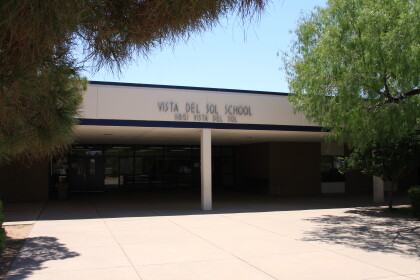
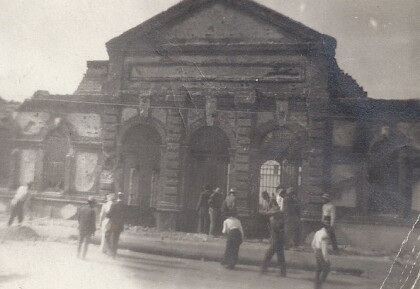
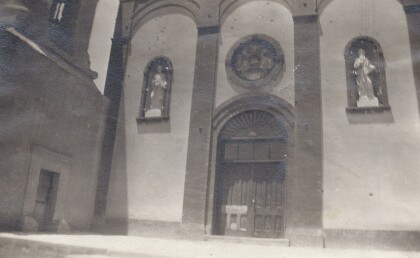
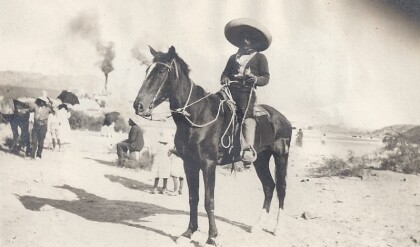
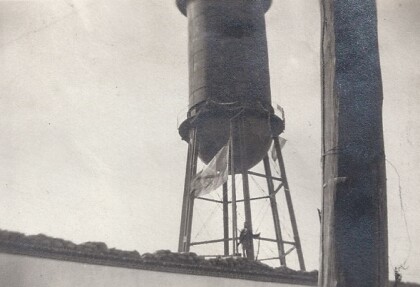
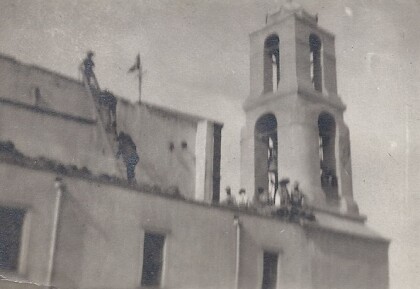
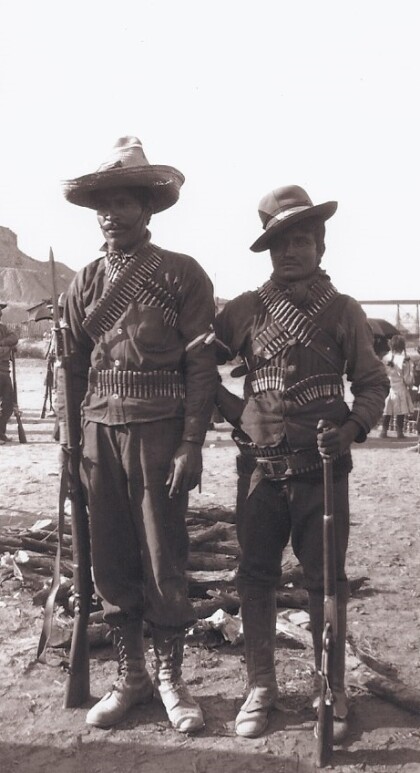
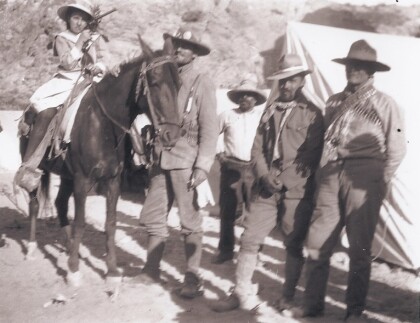
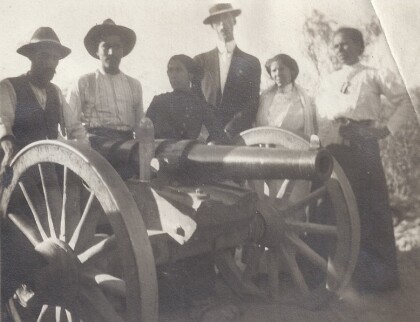
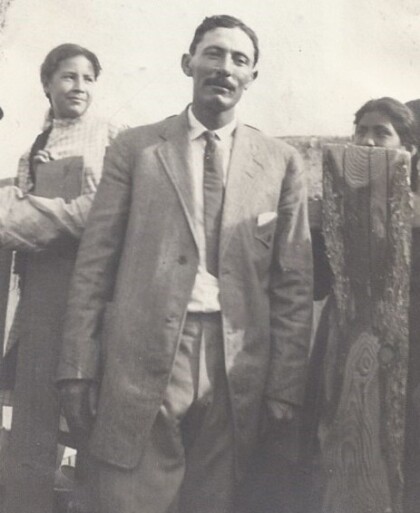
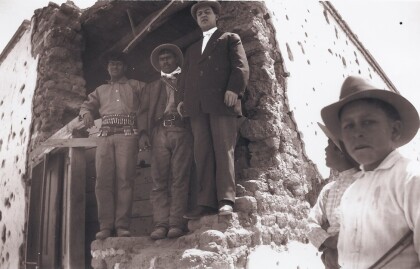
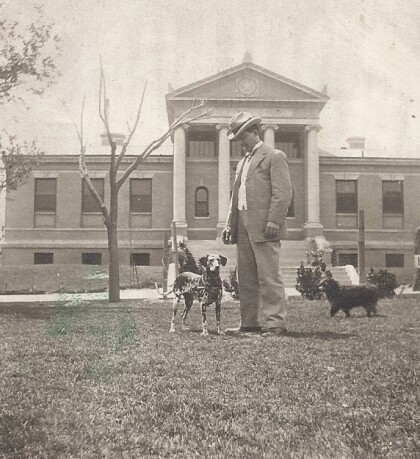
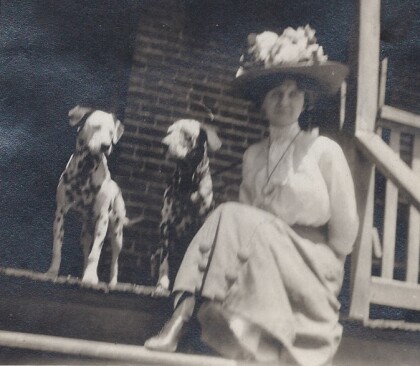
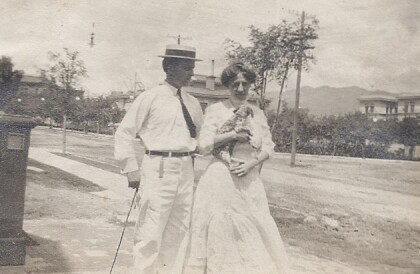
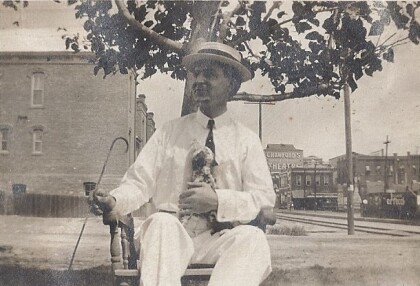
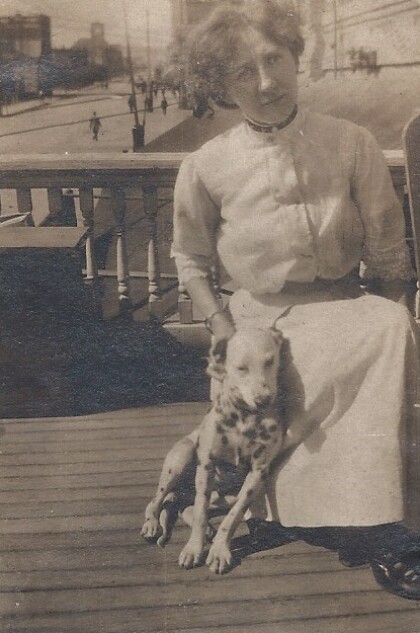
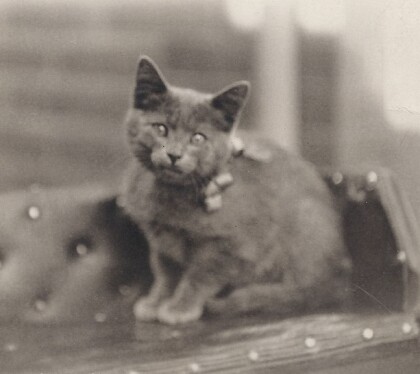
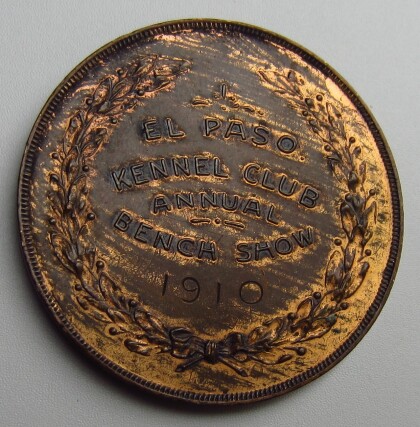
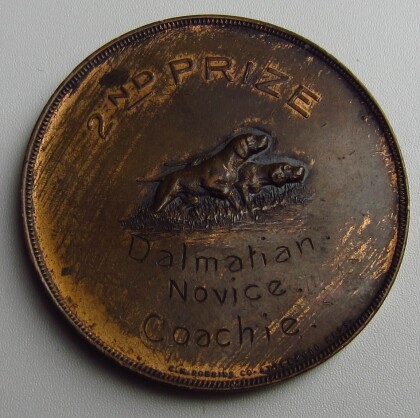
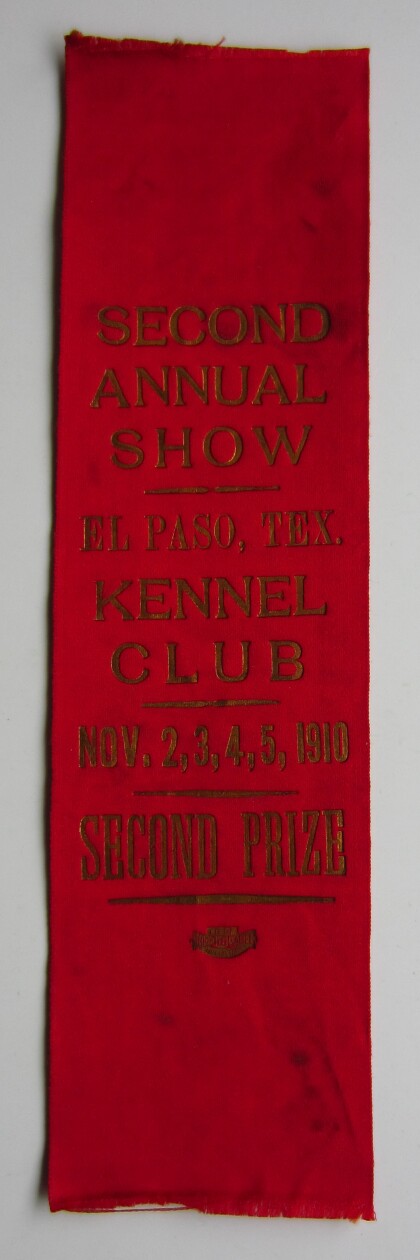
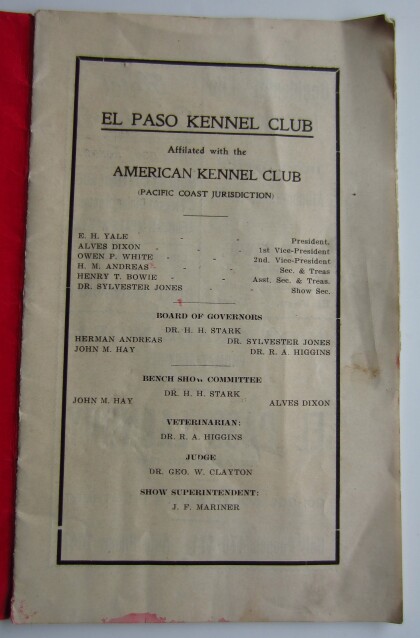
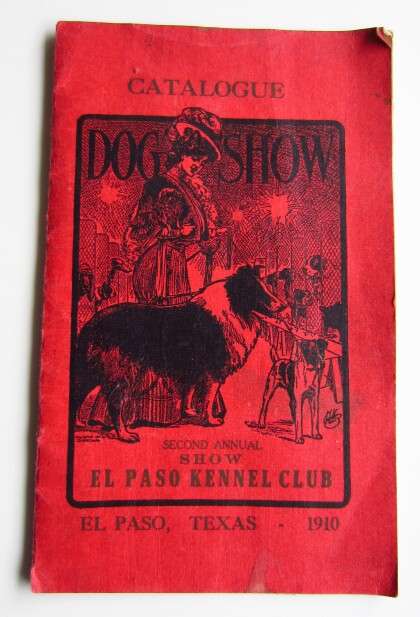
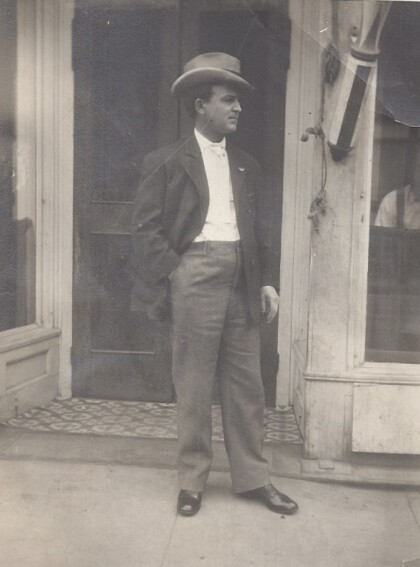
Comentarios
Hacer un comentario